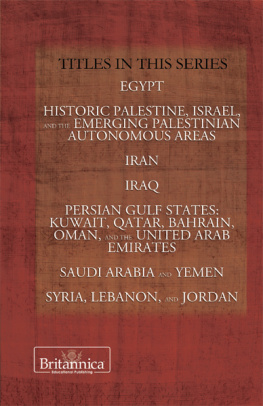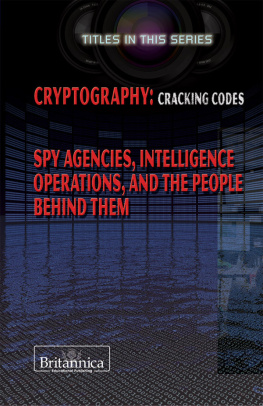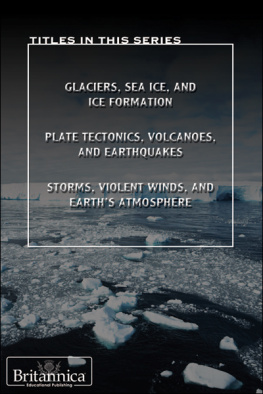WAR AT SEA AND IN THE AIR
THE BRITANNICA GUIDE TO WAR
WAR AT SEA AND IN THE AIR
EDITED BY ROBERT CURLEY, MANAGER, SCIENCE AND TECHNOLOGY

Published in 2012 by Britannica Educational Publishing
(a trademark of Encyclopdia Britannica, Inc.)
in association with Rosen Educational Services, LLC
29 East 21st Street, New York, NY 10010.
Copyright 2012 Encyclopdia Britannica, Inc. Britannica, Encyclopdia Britannica, and the Thistle logo are registered trademarks of Encyclopdia Britannica, Inc. All rights reserved.
Rosen Educational Services materials copyright 2012 Rosen Educational Services, LLC.
All rights reserved.
Distributed exclusively by Rosen Educational Services.
For a listing of additional Britannica Educational Publishing titles, call toll free (800) 237-9932.
First Edition
Britannica Educational Publishing
Michael I. Levy: Executive Editor
J.E. Luebering: Senior Manager
Adam Augustyn: Assistant Manager
Marilyn L. Barton: Senior Coordinator, Production Control
Steven Bosco: Director, Editorial Technologies
Lisa S. Braucher: Senior Producer and Data Editor
Yvette Charboneau: Senior Copy Editor
Robert Curley: Manager, Science and Technology
Rosen Educational Services
Nicholas Croce: Editor
Nelson S: Art Director
Cindy Reiman: Photography Manager
Brian Garvey: Designer
Introduction by Greg Roza
Library of Congress Cataloging-in-Publication Data
War at sea and in the air / edited by Robert Curley.
p. cm.(Britannica guide to war)
In association with Britannica Educational Publishing, Rosen Educational Services.
Includes bibliographical references and index.
ISBN 978-1-61530-753-1 (eBook)
1. Military art and scienceHistory. 2. Naval art and scienceHistory. 3. Air warfareHistory. 4. Military history. I. Curley, Robert, 1955
U102.W278 2012
359.009dc23
2011024848
On the cover: A nuclear-powered aircraft carrier of the U.S. Navy. U.S. Navy photo by PH 3c Dusty Howell
Pages Shutterstock.com
CONTENTS



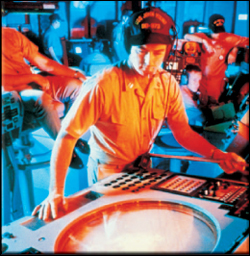


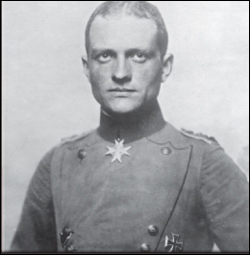




INTRODUCTION

An F/A-18F Super Hornet takes off from the U.S. aircraft carrier John C. Stennis. U.S. Navy photo by MC 3c Kenneth Abbate
T he use of military aircraft and naval ships has become common in modern times, but warfare wasnt always fought at sea and in the air. The earliest battles between organized groups took place on land with crude weapons. The first warships were developed thousands of years ago. Warplanes, however, have been around for only about 100 years.
The earliest vessels used for war at sea were probably those used for everyday travel: dugouts, rafts, and hide boats. The oars used to power ships were probably one of the first naval implements. The ancient Egyptians built boats made of reeds that ended in a sharp point. They used these ships for ramming enemies on the Nile River. By 3000 BCE, they had made larger versions capable of distant sailing, trade, and warfare. Later, they developed wooden ships that had both oars and sails.
The Minoans were the first to build ships specifically for war, rather than modifying merchant ships for that purpose. Their warships were long, narrow, and agile. They had a long bow for ramming. The Phoenicians and Greeks built vessels called biremes and triremes, which helped them rule the seas and spread their cultures. These ships had two and three sets of oars on each side instead of just one, allowing them to travel much faster.
At the end of the 4th century BCE, Demetrius I Poliorcetes of Macedonia introduced heavy missile weapons to warships. He had large crossbows and catapults mounted to the fronts of ships, which allowed them to attack other ships before ramming and boarding occurred.
Looking to increase their power in the Mediterranean, the Romans copied Greek triremes. They soon added spiked gangplanks to warships. After ramming an enemy, they dropped the gangplank to link the two ships together. This allowed Roman troops to board enemy ships and commence hand-to-hand combat.
In time, warships made more frequent use of heavy missile weapons. Some could hurl projectiles as large as 450 kg (1,000 pounds). Around the 7th century, the Byzantine Greeks began using Greek fire, a combustible material used to set enemy ships on fire.
Around 800 CE, the Vikings began building sturdy, double-ended, clinker-built ships. They had overlapping planks held together with iron nails and tarred rope. Their great ships had more than 30 rowers. The Vikings used long ships to travel long distances and conquer foreign lands. This type of ship remained popular in Europe through the 13th century.
By the middle of the 14th century, several European navies began using mounted guns. King Henry VIII of England built ships called carracks with gun ports so cannons could be set up below the deck. This proved to be more stable and effective than previous warships.
Carracks were replaced by galleons, which were longer, leaner, and even more stable. They could carry more heavy guns, and some had up to three tiers of canons. Evolving into the formidable 70- to 100-gun ship of the line, this type of heavily armed ship ruled the seas for three centuries. In the mid-1700s, navies began adding frigates and other smaller ships to their fleets. These ships were more maneuverable and were used as escort, patrol, and scouting ships.
As the Industrial Revolution took hold in Europe and America, militaries began building steam-powered ironclad ships. Navies around the world instantly recognized the value of these armoured vessels. Ironclads featured more effective forms of propulsion, armament, and armour. Important developments of this time included the paddle wheel, screw propeller, and more powerful guns. In the late 19th century, British engineer Robert Whitehead produced the first self-propelled torpedo. These innovations paved the way for the construction of modern battleships.
Next page
